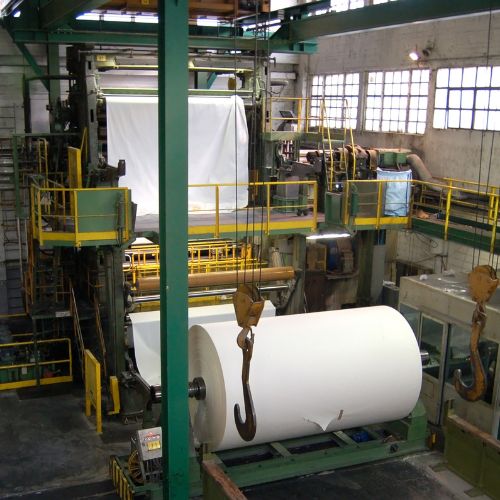
AI-driven Defect Detection System for a Leading Paper Mill
ThirdEye Data successfully developed and deployed an AI-driven surface inspection system for a leading paper mill to automate defect detection in paper rolls during high-speed production. The solution leverages computer vision, edge computing, and deep learning to detect wrinkles, tears, and texture issues in real-time—improving production quality, reducing customer claims, and cutting financial losses due to undetected defects.
THE CUSTOMER
BUSINESS GOALS OR CHALLENGES
Business Goals
- Automate the surface inspection process using AI to minimize manual errors.
- Detect surface defects before jumbo roll formation.
- Reduce compensation payouts from undetected defects.
- Improve overall product quality and customer satisfaction.
- Avoid the high cost of replacing legacy systems like PASTEX, ABB, and VALMET.
Understanding the Challenges:
- Manual inspection allows only a 1-hour window before defects are irreversible.
- Inconsistent detection due to human error.
- High compensation costs due to defective deliveries.
- Existing inspection systems are expensive and inflexible.
- Limited insights into defect patterns and root causes.
Prerequisites and Preconditions:
The system had to integrate with the high-speed production line, operate in industrial environments, detect a wide variety of defects in real time, and be scalable for future plant-wide deployment.
- Sample video data of production line defects.
- Access to the paper production environment for camera installation and testing.
- Agreement on defect types and classification priorities.
- Availability of production-specific training data.
- Hardware deployment feasibility checks (camera placement, lighting, network).
THE SOLUTION
ThirdEye developed a custom AI-based computer vision solution using high-speed industrial cameras, deep learning algorithms, and edge computing devices. The system detects and classifies defects in real-time and generates actionable alerts for operators, minimizing the chances of defective rolls reaching the end customer. We proposed and agreed on a 3-phase implementation—starting with a PoC, followed by pilot deployment and then full-scale rollout.
High-level Solution Approach
Camera & Sensor Setup
Installed high-resolution line-scan cameras with synchronized LED lighting and IR sensors to continuously capture clear images of fast-moving paper rolls.Edge Computing for Real-Time Detection
Deployed NVIDIA Jetson-powered edge devices on-site to process images locally and detect surface defects in real time with minimal latency.AI Model Development
Trained deep learning models (CNNs) using thousands of labeled defect images to recognize various paper surface defects like streaks, wrinkles, patches, and more.Automated Alerts & Dashboard
Built a real-time monitoring dashboard that displays defect type, location, and severity. Integrated alert system notifies operators instantly for quick intervention.System Integration
Integrated defect data with customer’s existing MES and quality control systems to maintain traceability and streamline reporting.Scalable Architecture
Designed the system to be modular and scalable, allowing easy expansion to other production lines or addition of new defect types in the future.
Technology Stack:
Hardware: Line-scan cameras, LED lighting, infrared sensors, edge GPUs
Software: OpenCV, PyTorch/TensorFlow, anomaly detection models, real-time dashboards
Platform: Edge computing via NVIDIA Jetson, integrated with existing factory systems
VALUE CREATED
The system has been deployed 3 months back, we are sill in the phase of estimating the final ROI, Here are a few ROI calculations received from the customer based on the last 3 months performance:
- Around 93% accuracy in detecting multiple surface defect types.
- Over 36% reduction in product rejections due to early detection.
- Approximately 25% improvement in overall product quality metrics.
- 25% reduction in customer returns and rework associated with defective alloy wheels.
- As per the initial performance, we are expecting ₹1.8 crore annual savings in compensation costs within 7 months of the full-scale deployment






